
Are you struggling to keep your customers coming back? We got you. Keeping customers is cheaper than finding new ones.
In this article, you will learn how to leverage customer retention strategies to build stronger customer relationships and increase their lifetime value. By the end, you’ll gain actionable insights and real-life examples of successful strategies to help turn them into your brand advocates.
Let’s get into it.
9 Practical Customer Retention Strategies For 2024
As you go through these strategies, ask yourself: Which of these can I integrate into my current business model? What adjustments or improvements can I make to optimize these strategies for my specific audience? Keep these questions in mind while you go over these strategies.
1. Personalize Your Customer Interactions
Make each interaction relevant and specific to the individual. 80% of consumers are more likely to purchase from a brand that provides personalized experiences. Similarly, personalized emails deliver 6x higher revenue.
Here’s how you can personalize your efforts to retain customers:
1.1 Profile Your Customer
Whether starting a new online business or improving an existing one, deeply understand your customers. Start by gathering as much data as you can on your customers through surveys, social media interactions, and feedback. Gather the following types of data on your customers:
- Demographic Information: Age, gender, location, and occupation.
- Purchase History: Previous purchases, frequency of purchases, and average spending.
- Social Media Interactions: Likes, comments, shares, and follows on your social media channels.
- Behavioral Data: Website visit patterns, email open rates, and click-through rates.
Use this data to create detailed customer profiles. Segment the collected data into groups based on demographics, purchasing behavior, and engagement.
Then use CRM software to organize and analyze this information. An important step here is to update the profiles at least quarterly to tailor marketing campaigns to meet customer preferences.
Integrating data-driven analytics enables deeper insights into customer behaviors, allowing businesses to tailor experiences with greater precision. Companies like Amazon use machine learning algorithms to predict customer preferences based on browsing and purchase history, leading to highly personalized recommendations. This approach significantly boosts not only sales but also customer satisfaction. By leveraging CRM tools, any business can track and analyze customer interactions efficiently, fostering more meaningful engagements.
1.2 Tailor Your Customer Communications
Address customers by name and reference their past interactions with your brand in emails, social media messages, or phone calls. For example, crafting emails with personalized subject lines is 26% more likely to be opened.
1.3 Customize Your Offers & Recommendations
Create targeted offers that are relevant to each individual’s preferences and purchase history. You can also offer discounts on items they’ve shown interest in.
A great example is this store specializing in kids’ playhouses. It uses recommendation engines to show relevant products. When a customer views a product page like “Playhouse Princess,” the site automatically suggests related products.
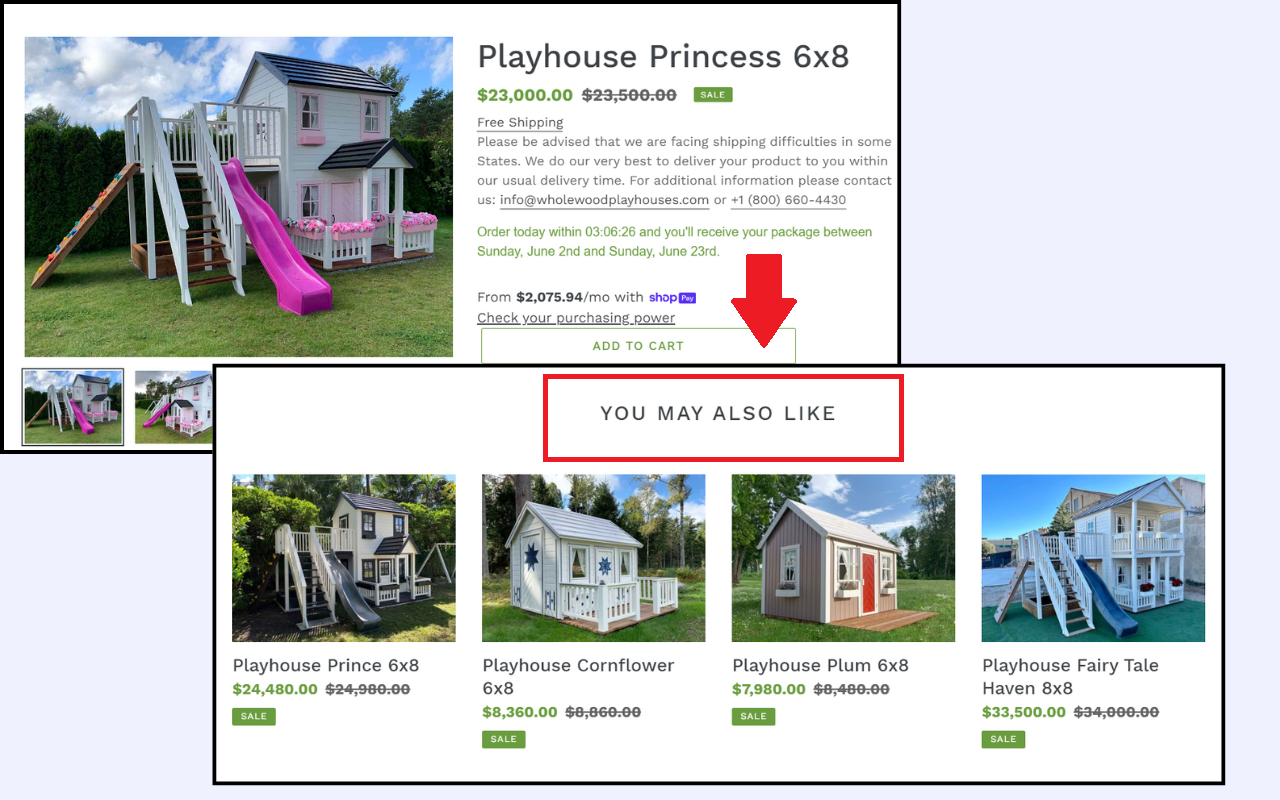
2. Engage Customers With Regular Communication
Communication keeps your customers engaged and interested in your brand. Make sure to reach out with relevant and timely information to keep a strong customer connection.
Here’s how you can effectively engage your customers through regular communication:
2.1 Use Multiple Channels To Reach Your Customers
Reach your customers where they are most active. Each platform has its strengths, and using multiple platforms ensures wider coverage. Use emails, social media posts, text messages, and even traditional mail. This will depend on your audience’s preferences.
For instance, Australian Business For Sale shows a strategic multi-channel approach. They leverage different social media channels to extend their reach. This way, they can connect with different target audience segments.
For example, they use LinkedIn to engage more professionally oriented buyers. YouTube to show valuable content about their buying and selling process.
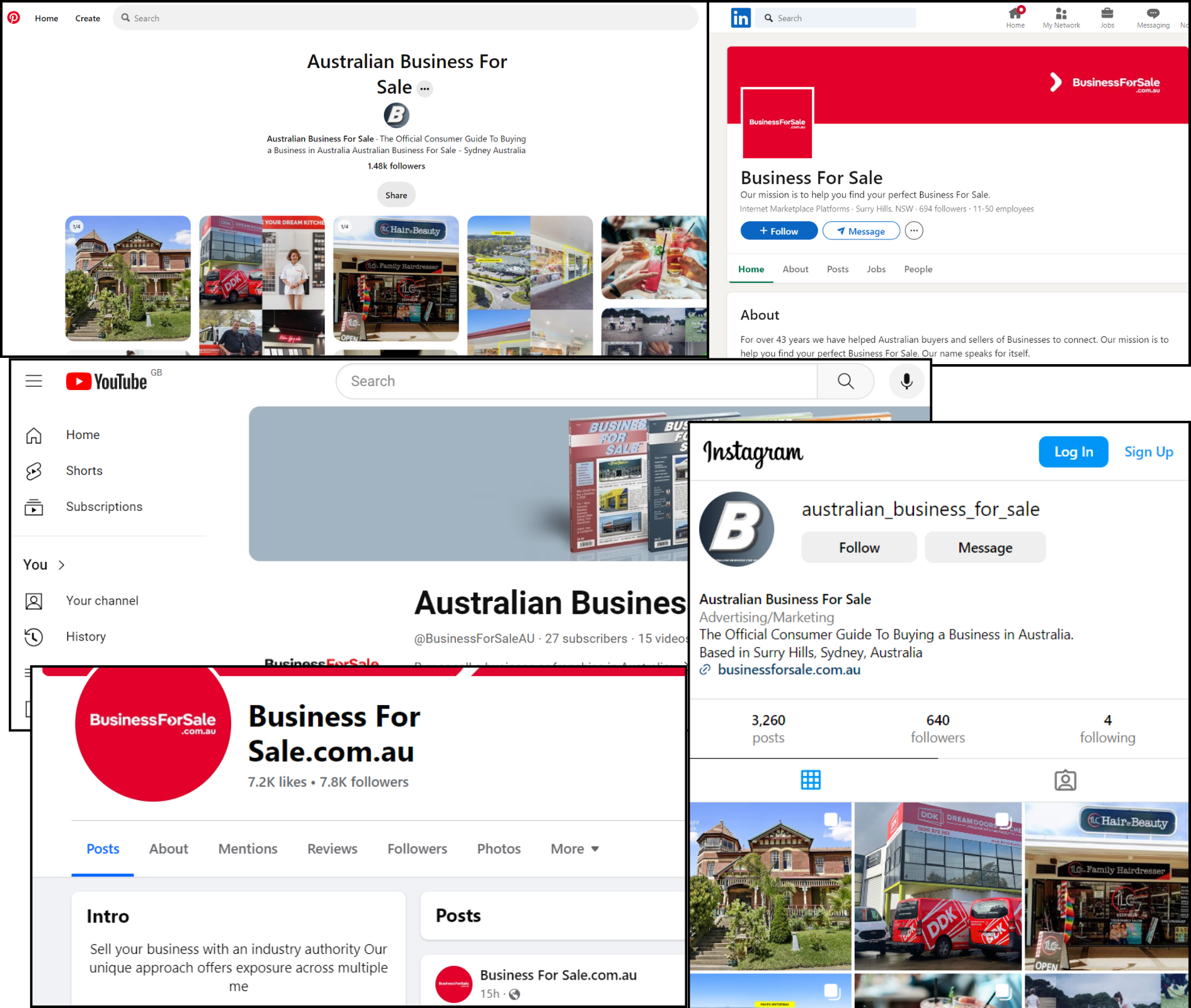
Benefits of Omnichannel Communication
Implementing an omnichannel communication strategy ensures a seamless and consistent customer experience across all platforms. By integrating various channels such as email, SMS, social media, and in-app messaging, businesses can maintain a cohesive dialogue with their audience. Studies show that companies with strong omnichannel engagement retain 89% of their customers, a stark contrast to the 33% retention rate for those with weak strategies. Retail giants like Nordstrom have leveraged omnichannel strategies to provide exceptional customer experiences, allowing shoppers to interact with their brand wherever they are, promoting both convenience and loyalty.
2.2 Provide Value In Every Customer Interaction
Every message should have a valuable element. It can be informative content, updates about new products or services, special offers, or helpful tips. Value-driven communication is less likely seen as spam, so you can keep more customers.
2.3 Establish A Regular Schedule For Customer Communication
Set a regular schedule for your communications to meet your customers’ expectations as they look forward to your messages.
For instance, send out a weekly newsletter every Monday morning. Or post on social media at the same time each day. This way you will train your customers to expect new content from you regularly.
3. Implement A Customer Loyalty Program
Increasing customer retention rates by just 5% can enhance profits by 25% to 95%. Moreover, customers who are part of loyalty programs are more likely to spend more and promote your business through word-of-mouth.
Here’s how to create an effective loyalty program:
3.1 Define The Rewards & Keep It Simple
First, decide what rewards will motivate your customers. This could be discounts, free products, or exclusive offers. 75% of consumers favor companies that offer rewards. Avoid complex points systems that can confuse customers. Simple structures are more engaging and can increase participation rates.
3.2 Make Your Sign-Up Process Easy
Make sure customers can sign up quickly and easily using your website or mobile app. A streamlined signup process will boost enrollment rates by over 30%.
3.3 Show Appreciation To Your Loyalty Program Members
A thank you note or a small gift on their program anniversary can deepen loyalty.
Incorporating customer feedback into loyalty programs can significantly enhance their effectiveness. When customers see that their opinions shape rewards or how the program operates, their engagement often increases. For example, companies like Starbucks have used customer input to tailor their rewards to better match customer interests, resulting in higher satisfaction and increased participation in loyalty schemes. Engaging members in feedback sessions or surveys not only strengthens the program but also reinforces a sense of belonging and loyalty.
A great example is Starbucks’ Rewards program. It is a tiered loyalty system where customers earn stars for purchases, which they can redeem for free items. For convenience, customers can sign up and track their stars directly through the Starbucks app. Today, the program has 31 million members and contributes to $19.16 billion in revenue.
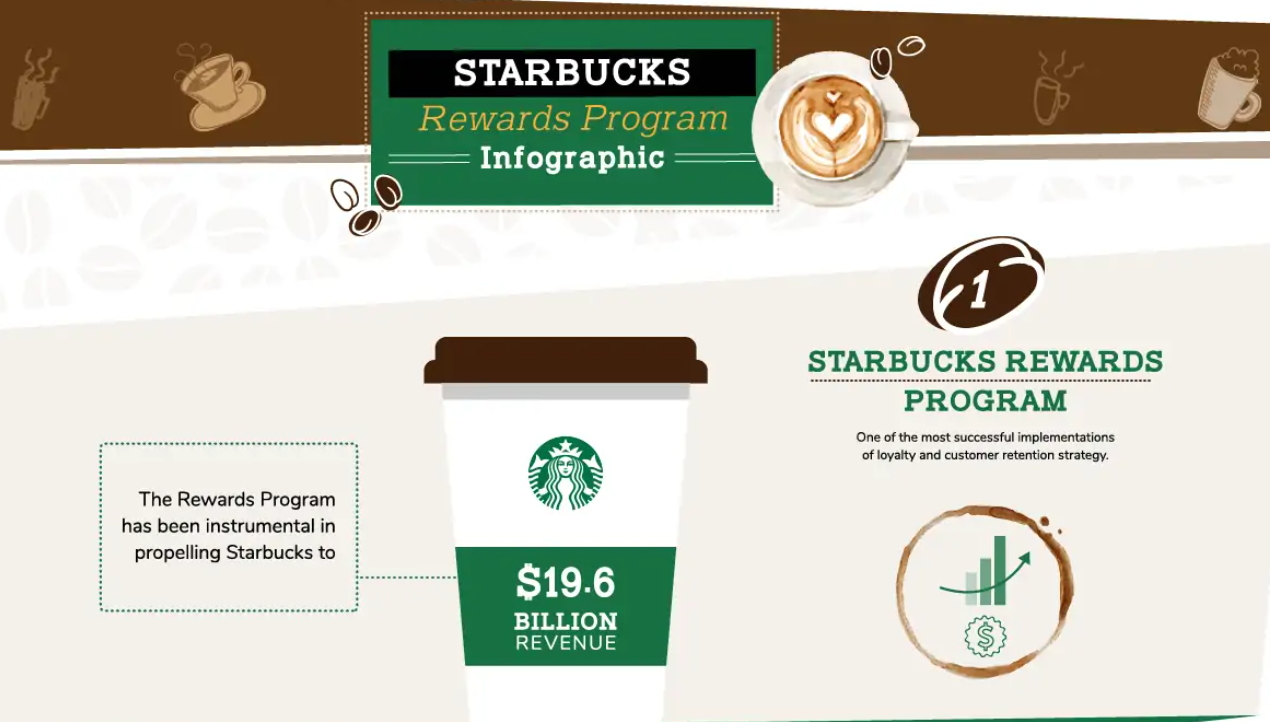
4. Share Social Proof To Build Trust
92% of consumers trust non-paid recommendations more than any other type of advertising. Additionally, 70% of online shoppers look at 5 to 6 product reviews before making a purchase.
Here’s how to effectively share and use social proof in detail:
4.1 Collect & Display Customer Reviews
Encourage customers to leave reviews on your website, social media, and third-party review sites like Yelp or Trustpilot. Then publish the best reviews across your marketing channels.
Make sure to respond to both positive and negative reviews. This shows that you value customer feedback and are ready to improve service.
Learn from Alexander Tutoring, a teaching service. They show video testimonials from satisfied customers, specifically from parents. These testimonials resonate with other parents looking for reliable children’s educational support.
Additionally, Alexander Tutoring displays its 5-star Google and Yelp reviews on its homepage. It makes it easy for potential clients to trust the quality and impact of their tutoring.
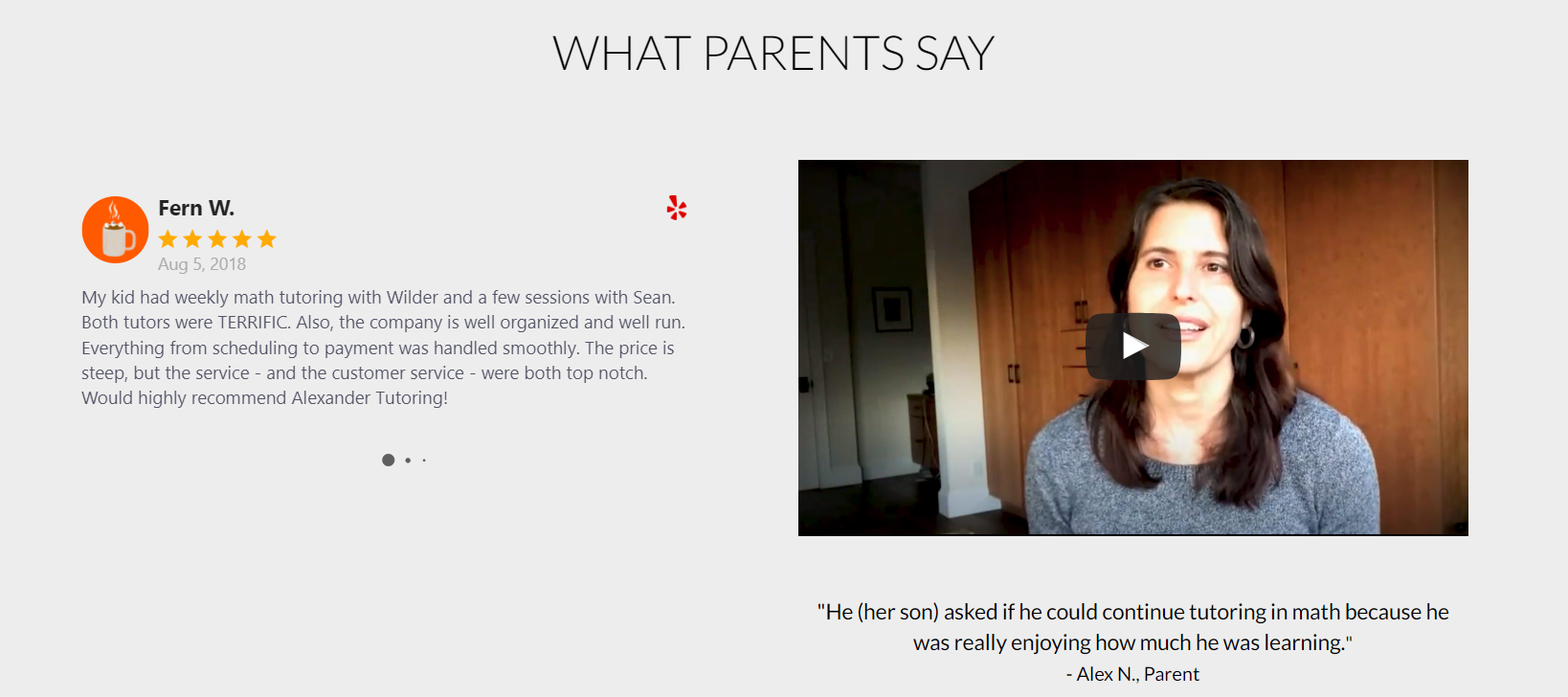
4.2 Capitalize On User-Generated Content
Motivate customers to post about their experiences with your brand on social media. Create a specific hashtag to make content easy to find and share.
Regularly feature user-generated content (UGC) on your channels. This rewards your users for their engagement. It also shows prospective customers your product’s real-life application.
Before publishing UGC on your platforms, make sure it’s high-quality and aligns with your brand’s style. Edit user submissions using Adobe Premiere, Vidpros, or Clipchamp. It keeps brand consistency and enhances your social feed’s visual appeal.
4.3 Develop & Publish Detailed Case Studies
Write case studies that detail how your product or service provided a solution to a problem. Include quotes from satisfied clients and data to support your claims.
Share them on your website, in newsletters, and across social media platforms.
5. Provide Quick Delivery & Easy Refunds
41% of shoppers will pay more for same-day delivery, and 24% expect it as standard. To meet these expectations, streamline your logistics. Use reliable delivery partners and make sure to keep customers informed about delivery times and any delays. This will help increase their customer lifetime value ( LTV ) and your profits.
Having a clear and simple refund policy is equally important. 80% of consumers check the return policy before buying, so make sure you process refunds within 5-10 business days. Moreover, allow customers to request returns through various channels like websites, direct email, or over the phone.
A transparent and fair refund policy is not just a safety net for customers but an opportunity to establish trust. Consumers today are informed and often check refund policies before making a purchase. A policy that is straightforward and customer-friendly can reassure buyers and reduce purchase anxiety. Zappos, for instance, is well-regarded for its customer-centric return policy, which has helped build robust customer trust and loyalty. Understanding this, crafting a policy that prioritizes ease and clarity fosters repeat business and long-term customer relationships.
Amazon sets a high standard for quick delivery and easy refunds. The company offers Amazon Prime with free same-day or 2-day shipping on eligible products. This service is a massive hit, with over 230 million Prime members worldwide.
Additionally, Amazon’s hassle-free return policy comes with prepaid shipping labels. These practices also contributed to Amazon’s reputation for exceptional customer service. The best part, Amazon Prime generated 40.2 billion in revenue in 2023.

6. Offer Excellent Customer Service
93% of customers buy again from businesses that provide excellent customer service. Also, 70% of new customers will return after you solve their complaint.
The key is to balance efficiency with personal touch. Use chatbots to handle common inquiries and basic issues 24/7. For more complex or sensitive issues, hire a customer service rep. Work with a headhunter agency like Genius to hire affordable but vetted reps. This way, your customer service is both cost-effective and high-quality.
Here’s how you can make sure your customer service operations are top-notch:
- Invest in comprehensive training for your customer service team. Ensure they have the knowledge and skills to handle inquiries efficiently and empathetically.
- Respond to customer emails within 24 hours and answer calls in under three rings.
- Encourage your team to listen actively to customers. Understand their concerns without interrupting and validating their feelings.
- Customers look for solutions when they reach out for support. Train your team to focus on solving problems rather than offering excuses.
- After resolving a customer’s issue, follow up to make sure they are satisfied with the solution. See if there is anything else you can do to help. This follow-up can be via email, phone, or even a feedback survey. This shows that you care about customer experience beyond the initial interaction.
7. Leverage Customer Retention Emails
Personalized email campaigns can improve transaction rates and revenue 6x higher than non-personalized messages. Moreover, retention emails increase customer lifetime value as they keep your business relevant to their needs.
Here’s how you can effectively leverage these emails to boost customer loyalty and brand loyalty:
7.1 Welcome Emails
Start strong with a warm welcome email after a customer makes their first purchase or signs up. Personalize the email with their name and provide useful information about what they can expect from your brand.
Look at Aura’s welcome email to learn how to effectively engage and guide new users.
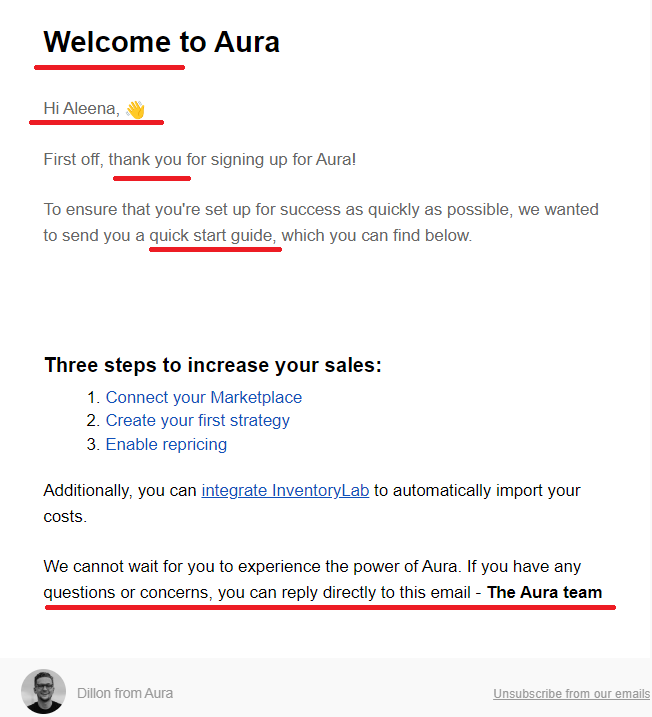
The email has 4 noteworthy customer retention strategy elements:
- Starts with a warm, personalized welcome using the customer’s name, Aleena.
- “Thanks, Aleena for signing up”, shows appreciation and sets a positive tone.
- Provides a quick start guide to assist the new user in getting started.
- Invites the user to contact the team directly with any questions, promoting open and supportive communication.
7.2 Educational Content Emails
Schedule bi-weekly or monthly emails that educate your customers on how to get the best out of your products or services. This frequency keeps your customers engaged without overwhelming them. Include tips, tutorials, and usage guides. This not only adds value but also encourages product usage and satisfaction.
For instance, if your audience is interested in eCommerce, include a series of ‘guide’ posts like this how-to article on starting a business in your emails. This could feature step-by-step advice, best practices, and key tools needed to launch and grow a successful online business.
7.3 Re-engagement Emails
For customers who haven’t interacted with your brand in a while, send re-engagement emails. These can include special offers, updates on new features, or simply a message to say you miss them and value their business.
7.4 Anniversary/Milestone Emails
Celebrate milestones like the anniversary of a customer’s first purchase or their membership sign-up. Include a special offer or note of appreciation to mark the occasion.
7.5 Seasonal/Holiday Special Emails
Take advantage of holidays or seasonal periods to send themed emails with special promotions or greetings. These are opportunities to increase touchpoints and sales.
8. Implement A Customer Feedback Loop
A well-managed feedback loop gives innovative product improvements. This approach drives a higher market share and ensures your offerings remain competitive.
Collect customer feedback with the 3 key methods:
- Surveys: Use SurveyMonkey or Google Forms to create and send surveys to your customers.
- Feedback Forms: Place feedback forms on your website and in your mobile app. This makes it easy for customers to provide their thoughts at any time.
- Social Media & Online Reviews: Keep an eye on social media platforms and online review sites to gather feedback.
Once you’ve gathered this information, use data analysis tools to identify common themes or issues. Discuss this feedback with your team, ideally in weekly meetings, ensuring all departments understand the customer’s perspective and the required changes.
Next, implement changes based on this feedback. Prioritize the adjustments that will most impact customer satisfaction and align with your business objectives.
Remember to communicate these changes back to your customers. For specific feedback, reach out directly to inform the individual about the steps you’ve taken. For broader changes, announce the improvements through newsletters, your website, or social media.
9. Start A Customer Education Program
Having a customer education program shows your long-term investment in your customer base. This strategy enhances customer satisfaction and empowerment. It also reduces the strain on your support team as customers resolve their issues independently.
Here’s how you can improve customer retention using an education program:
9.1 Develop A Comprehensive Knowledge Base
Create detailed, searchable articles and tutorials that cover all aspects of your products and services. This knowledge base should include troubleshooting guides, usage tips, and answers to frequently asked questions. Make sure the content is easy to understand and accessible to all users, regardless of their technical expertise.
Consider this excellent example from Pinch, a med spa company that leverages many tactics to make its knowledge base interactive and engaging. They include a quiz titled “Learn What Treatment Is Right For You” on their website homepage. It helps customers identify which of their services best meets their needs.
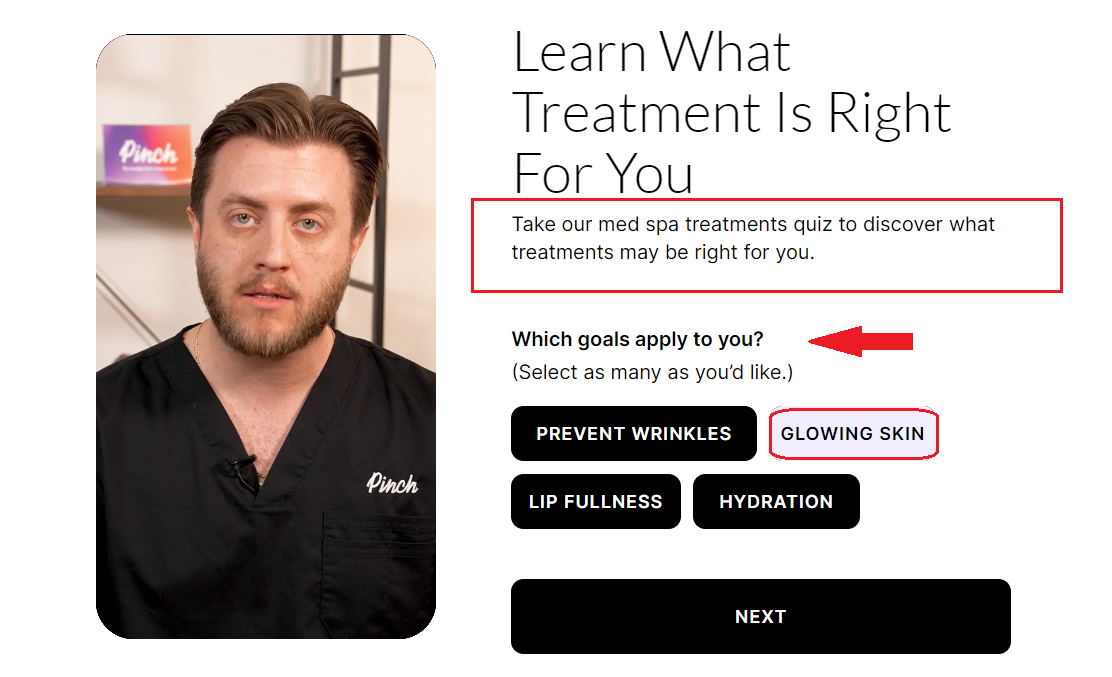
Additionally, Pinch incorporates a dedicated FAQ section to address common questions. They also integrate videos directly on their homepage that demonstrate various treatment processes.
9.2 Establish A Community Forum
Set up a community forum where customers can discuss their experiences, share solutions, and offer tips to each other. This fosters a sense of community among users. Moderate the forum to maintain a helpful and respectful environment.
Breaking Eighty is a standout example of how a specialized forum can engage a community. Their club members have access to an active online forum focused on all things golf. Golf enthusiasts discuss strategies, share course reviews, exchange equipment advice, and even organize meetups through this platform.
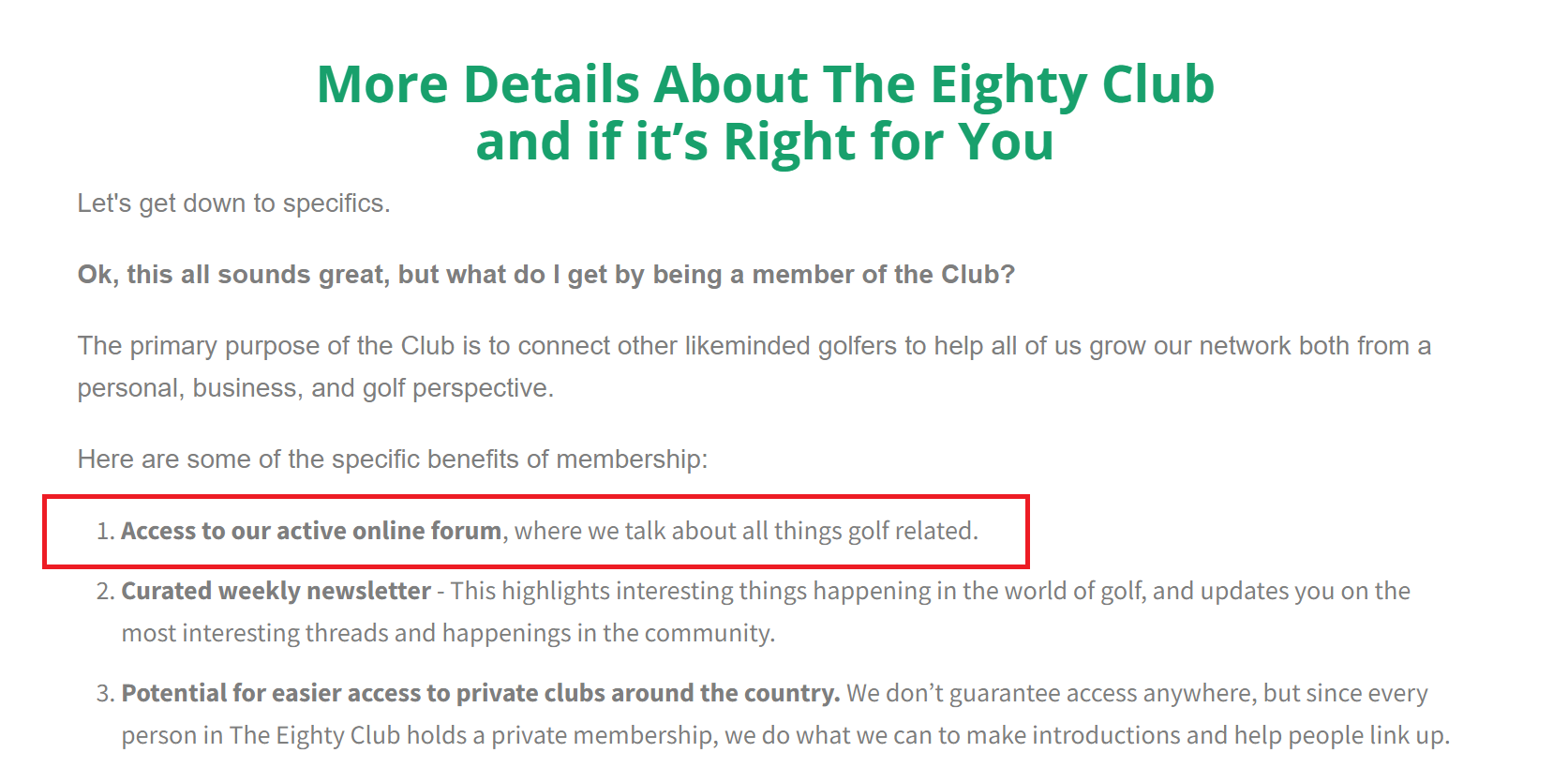
This customer retention strategy strengthens the community bonds, making membership more valuable and engaging.
Community forums can play a significant role in amplifying customer retention. These platforms offer a space for users to collaborate, share tips, ask questions, and provide support to each other. Not only does this community interaction empower customers by giving them a voice, but it also creates an invaluable sense of belonging. Companies such as Fitbit have successfully engaged their user base by hosting vibrant online communities. Such forums become a cornerstone for customer retention by reinforcing the brand’s position as a helpful resource and fostering peer-to-peer support.
Conclusion
Which retention strategies can you start implementing today? As you reflect on this question, consider the ongoing relationship you are building with each customer interaction. Think about how to start making your existing customers feel valued and connected.
To further strengthen your customer engagement, expand your digital tools by creating a mobile app for your business. Visit AppInstitute to explore how easily you can build a mobile app without coding. Our no-code app maker helps you quickly launch an app, providing another powerful channel to boost your customer retention rate.
Start building today and remember to continuously improve your customer relationships to retain loyal customers.
Author Bio:
Burkhard Berger is the founder of Novum™. He helps innovative B2B companies implement modern SEO strategies to scale their organic traffic to 1,000,000+ visitors per month. Curious about what your true traffic potential is?
- Author picture: Here
- Gravatar: [email protected]
Last Updated on February 15, 2025 by Ian Naylor
0 thoughts on “9 Proven Customer Retention Strategies That Actually Work”